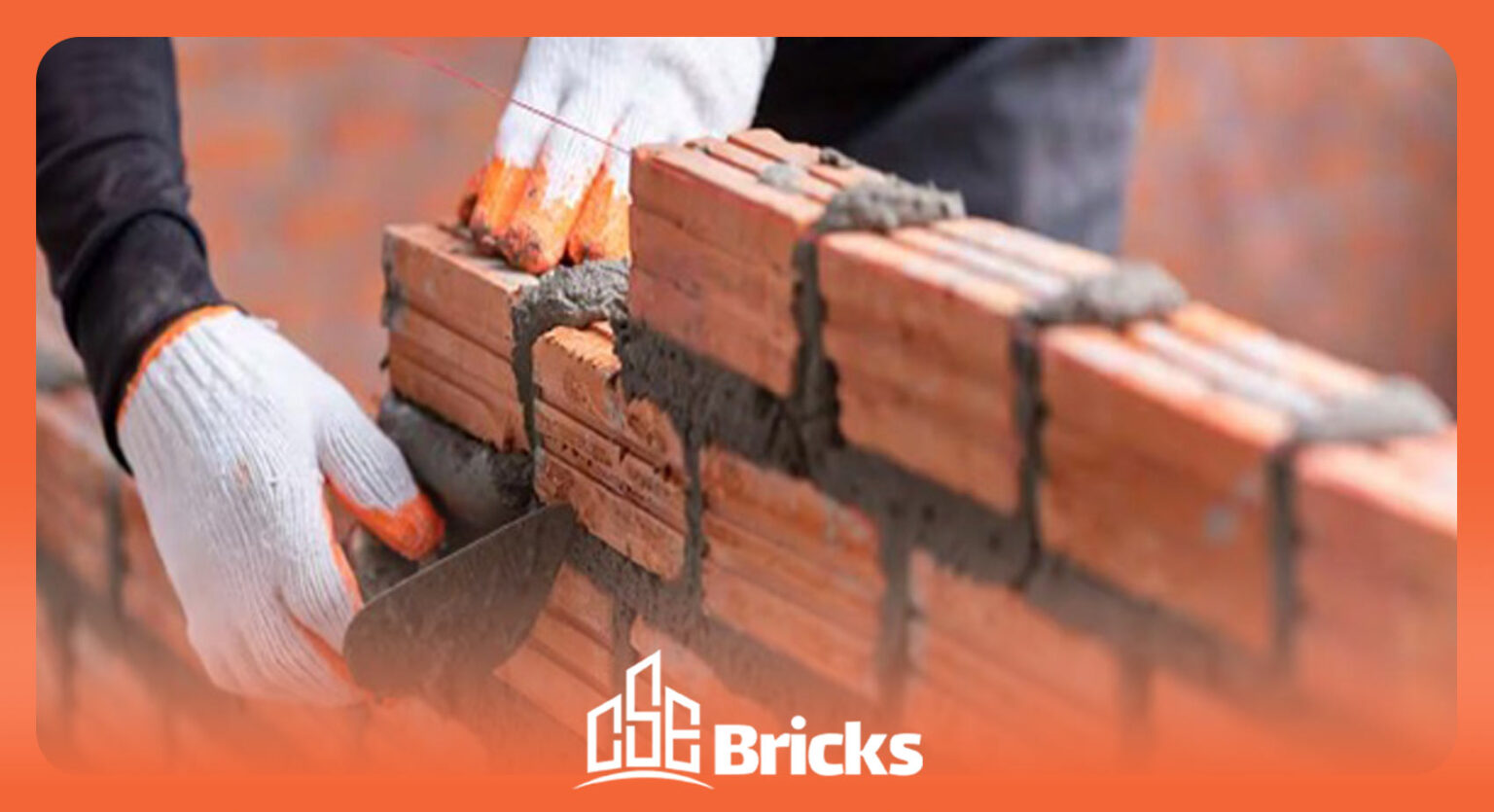Blog
Four common methods of installing bricks

Four common methods of installing bricks
What is the best way to repair bricks?
In brick masonry, connections are formed by applying mortar both between the brick layers and in the joints where bricks meet. The most commonly used construction methods of installing bricks is cement mortar. Lime mortar and clay mortar are also commonly utilized in this type of construction. Below, we will examine several methods of installing bricks.
Four common methods of installing bricks
- Longitudinal Bond
- Transverse Bond
- English Bond
- Flemish Bond
Longitudinal Wall Construction
In longitudinal wall construction, bricks are laid horizontally and flat. In fact, in this type of wall construction, all bricks are laid longitudinally. Longitudinal brick wall construction is the simplest repetitive bricklaying pattern.The limitation of longitudinal wall construction is that it cannot effectively bond with adjacent bricks in thick brick walls from the width.Walls with a thickness of half a brick—like partition walls—are the only ones appropriate for longitudinal bonding techniques. Walls built using the longitudinal method are not strong enough to stand alone if they have a long height. Therefore, they require support structures such as brick columns.
Application of Longitudinal Wall Construction
This bond is mostly used in steel-framed or reinforced concrete structures as an exterior facade and also for constructing cavity walls.
Various types of wall construction using longitudinal bond include:
- Partition walls
- Chimney stacks
- Garden walls
Transverse Wall Construction
In transverse methods of installing bricks, bricks with dimensions of 9×9 cm are used. Transverse bricklaying is suitable for curved surfaces and constructing full-thickness walls. It should be noted that the transverse method is not suitable for load-bearing walls, as these connections do not have the strength to transfer pressure. The transverse bonding technique ensures a half-brick overlap by incorporating three-quarter bricks in every other course.
Advantages of Transverse Wall Construction
- Easy to build
- Simple structure
- Does not depend on skilled labor
English Wall Construction
English bond walls alternate between rows of stretchers and headers, creating a repeating pattern of longitudinal and transverse brick courses.To interrupt vertical joint alignment, split bricks are placed at both the start and end of the wall after laying the first course.A split brick, cut lengthwise into two equal parts, is typically used at the corners of brickwork to maintain bonding integrity.
Flemish Brick Bond
Flemish brick bond, also known as Dutch brick bond, is created by alternating the width and length of bricks in a single course. The next layer of bricks is placed such that the width is centered on the length in the course below. This means that the widths of the alternating bricks in each row are placed on the lengths of the bricks in the row below. The thickness of the Flemish brick bond is at least one full brick.
Disadvantages of Flemish Brick Bond
Flemish brick bonding is difficult and requires more skill for proper alignment. All vertical mortar joints must be vertically aligned to have the best effects. Flemish brick bond installation has a better appearance compared to English brick bond, but it is weaker for constructing load-bearing walls. Flemish brick bond can be used for aesthetic purposes in facades. However, if the walls need to be plastered, it is better to use English brick bond.
Five Methods for Repairing Brick Walls
Always remember that prevention is better than cure. That is, it is better to reinforce the building before needing to repair the bricks. Reading the article on building reinforcement will help you with this. Next, we will examine the repair of brick walls using epoxy resin injection, grout and mortar, rebuilding parts of the brick wall, installing a corner ferromagnetic plate, stitching cracks, and other techniques.
Click to view article “What are the methods of strengthening building?”
Five Methods for Repairing Bricks:
- Sealing cracks with epoxy resin injection
- Repairing brickwork with mortar
- Installing a ferro-cement plate in the corner
- Rebuilding the wall
- Stitching cracks
Crack Sealing with Epoxy Resin Injection
Sealing cracks is one of the best methods for repairing defects in brick walls. In this method, cracks and other defects in the brick wall are sealed using epoxy resin injection.
Repairing Brick Wall Defects with Mortar
Cement mortar is also one of the best types of repair materials, widely used in repairs. Cement mortar is also the best solution for repairing defects in brick walls. However, the compressive strength and tensile strength of epoxy mortar are higher than those of cement mortar, and it has less elasticity.
Installing Ferrocement Sheets in Corners
Wire mesh is used to repair defects in brick walls, such as cracks in the corners of the walls.
Rebuilding a Section of a Wall
When significant damage occurs to a masonry wall, the masonry wall is broken down and rebuilt from the base. Rebuilding the wall is also a method of repairing defects in brick walls.
If the entire load-bearing wall is severely damaged, the whole wall is rebuilt with support from the upper part of the structure.
Stitching Method for Repairing Cracks
The stitching method is used to repair large cracks in walls. In this technique, both sides of the crack are drilled, U-shaped M.S steel is placed in the groove and both holes perpendicular to the crack, and then the crack is filled with mortar.
What is the best method for installing bricks, in your opinion?










